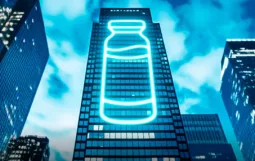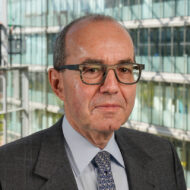The trade routes of counterfeits
I have not forgotten the Chinese taxi driver who wanted to sell me a Rolex for $100 in Singapore a while back. Nor have I forgotten his absolute fury when I laughed and told him that if I wanted to buy a fake Rolex, I could have done it in Bangkok for $5. Since then, little has changed in the sad business of counterfeiting. Singapore, a country which commands our respect with its economic success, stable political system, orderliness and cleanliness, still plays an astoundingly prominent role in this criminal line of business. It is no longer a country that produces forgeries, today it has become a key distribution centre. Sales of fakes, however, have certainly changed in the past 30 years. As a result of globalization, with its new economic zones with customs and tax privileges, opportunities for criminal networks have grown exponentially.
These findings are laid out in a fascinating report – “Mapping the Real Routes of Trade in Fake Goods” – developed by the OECD and the European Union Intellectual Property Office (EUIPO). Even conservative estimates for counterfeits in 2016 are expected to reach $460 billion. When there’s money to be made, almost anything can be faked: watches, jewellery, leather goods, clothes, cosmetics, foodstuffs, medicines, spare parts, electronics products, machines, toys. The share of counterfeits in imports of foodstuffs (1.2%) or pharmaceuticals (3.3%) is low, however among perfumes, handbags, textiles or toys it can amount to as high as 10%. The consequences are considerable: counterfeits undermine consumer confidence and cause economic and physical harm, specifically in the case of incorrectly declared food and counterfeit medicines.
China is the world’s leading producer in nine of the top ten fields of counterfeiting. Only in field of counterfeit medicines is China bested, unsurprisingly, by India. Above all else, the business model is powered by the sheer ease with which counterfeits can be marketed. The emergence of special economic zones plays an important role here, too. As late as 1970, there were 80 of them in 30 states, now there are 3,000. With their lax inspections, they offer a paradise for the handling of counterfeit products. In no particular order, Hong Kong, the United Arab Emirates (especially Dubai) and Singapore are key. From there, the goods go to Albania, Egypt, Morocco or the Ukraine for transit to Europe, Panama for the USA, or Saudi Arabia and Yemen for Africa. Turkey is notable for its roles as both a producer (leather, handbags, clothes, foodstuffs) and handling facility. An Eastern European country also seems to be the first destination for counterfeit goods, so that they then arrive at their destinations with a European postmark.
These trade flows are not about the little trinkets which tourists bring home from their holidays. This is big business – criminal, well organized, wide-ranging and highly profitable. Identification of these trade flows is certainly a good first step against the production and distribution of counterfeits. But it will take some time before we manage to tackle the issue at the source. While we collect and analyze data, and try to put in place the most effective solutions to tackle this scourge (from strengthening legislative frameworks and regulatory systems, implementing effective technologies, etc.) it is our duty to inform as much as we can the most affected populations. Especially when the products that are being counterfeited are not trendy bags or watches, but medicines or vaccines. Some countries are literally flooded by fake medical products. Just last year, 16 seaports on the eastern and western coasts of Africa (Nigeria, Benin, Kenya and Togo) saw huge hauls of potentially dangerous pharmaceutical products seized including contraceptives, cough syrups, antibiotics, anti-parasitics, and anti-malarials. Thankfully, millions of pills where seized… but how many made it to African’s hospitals, pharmacies, and homes? Behind these numbers there are dramatic stories of patients being tricked, believing they are receiving genuine treatments made to cure or alleviate their illnesses but instead they are getting potentially dangerous products that at best will have no effect, and at worst will be toxic or even fatal.
One of the biggest obstacles to overcoming the traffic of fake medicines is the lack of awareness: there are plenty of people that are just not aware or underestimate the risks these pose. Patients need to be informed about the dangers of purchasing medicines off the street or on the Internet instead of using a licensed pharmacy. For example, they may not think to check the packaging carefully or realize that experiencing unusual reactions to a medicine they have taken many times before may be the result of a dodgy product. We need to help spot the red flags!
We’re very proud to collaborate with organizations working along the supply chain on the Fight the Fakes campaign. In so doing, we are creating a global movement of people speaking up about fake medicines and trying to limit the consequences of this criminal traffic.
Author



